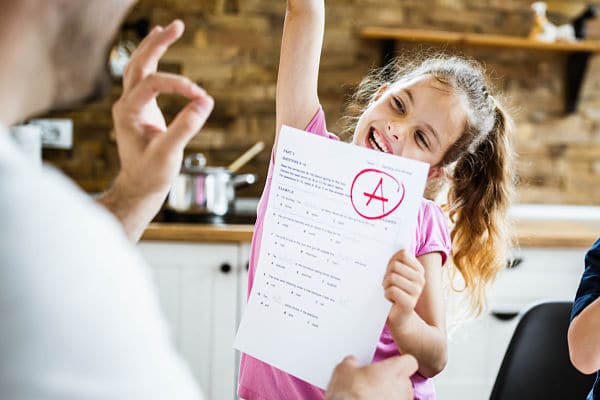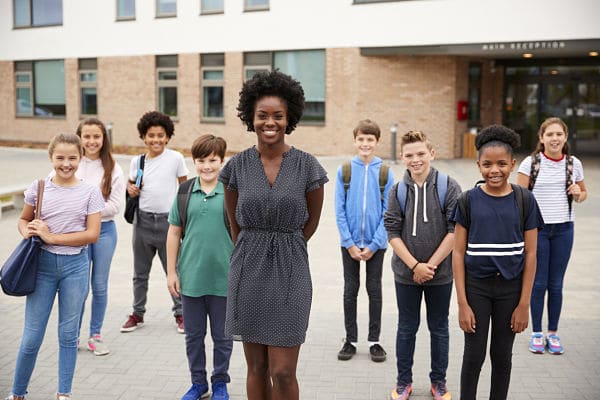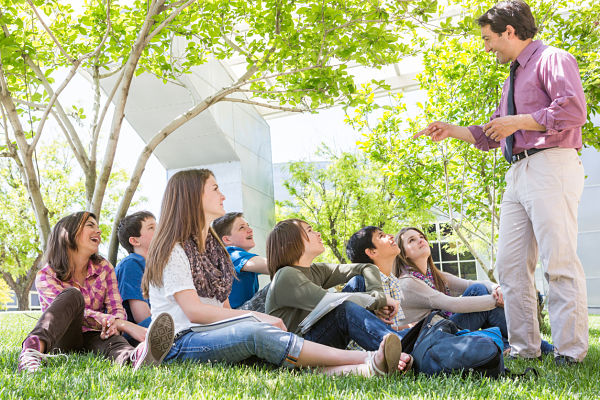As we work toward getting kids back to school in 2020, school districts across the country are exploring all options to safely educate kids during the ongoing pandemic. One area they are exploring is the idea of outdoor classrooms. This is due to general agreement on a few key points:
- Public health trends have shown it’s important to maintain social distancing in any public environment and many schools lack the square footage to accomplish this indoors.
- Children learn better in a hands-on, in-person environment, rather than online.
- COVID-19 has a much harder time taking root in outdoor environments.
Therefore, it’s no surprise that the viability and effectiveness of outdoor classrooms has become a hot topic in recent weeks. Here are some points to consider in favor of outdoor learning and why it could be a good option for your district.
The History of Outdoor Schooling
Turns out this novel idea for a novel virus has actually been done before. Holding formal schooling outside is actually an old idea that’s already been proven to be beneficial. The New York Times has published an article on the history of outdoor schooling, taking us back more than 110 years to the days when rampant tuberculosis was taking a fatal toll on the young. In 1907, two Rhode Island doctors proposed the creation of an open-air schoolroom. In Providence, they converted an empty brick building with ceiling-height windows on every side into a classroom where the windows were kept open at nearly all times.
The Times notes, “The experiment was a success by nearly every measure — none of the children got sick. Within two years there were 65 open-air schools around the country either set up along the lines of the Providence model or simply held outside.”

While mainstream educational theory has moved away from the idea of outdoor learning over time, its benefits have been established:
- Hundreds of studies over the years have demonstrated a positive correlation between engagement with nature and academics; some researchers have found that outdoor learning can improve both standardized test scores and graduation rates.
- A 2018 study conducted over an academic year looked at the emotional, cognitive and behavioral challenges facing 161 fifth graders. It found that those participating in an outdoor science class showed increased attention over those in a control group who continued to learn in a conventional classroom.
Benefits for Children
One foundational idea driving the interest in outdoor learning is that children are geared to learn everywhere, all the time. Practical experience, as well as studies like those mentioned above, are showing that children benefit from formal learning time spent outside; it provides more physical activity and motor development, more hands-on experiences, and more variation in social-emotional growth through peer interaction. Learning outside also supports skills that enhance later academic success such as language development and creative expression.
Benefits to School Districts
Outdoor classrooms also provide benefits to school districts. First and foremost, they would help alleviate some of the challenges administrators are facing in the post-COVID world, including:
- Social-distancing guidelines requiring six feet of separation or fewer than 11 people in a room
- Increased levels and/or periods of classroom ventilation
- Continuing access to in-person instruction, particularly for disadvantaged students for whom the remote learning experience has been less than ideal
Clearly, outdoor learning meets these needs (and the needs of working parents) as well as or better than some other options under consideration like indoor flexible scheduling. In addition, setting up an outdoor classroom can be relatively inexpensive compared to the other options that districts are considering, including the purchase of temporary portable units. According to EdWeek, the cost of setting up an outdoor learning space can run from $5,000 to $10,000, depending on the design.
Built-In Flexibility
Just like an indoor classroom, an outdoor classroom provides a great deal of flexibility:
- It can be used to present almost any curriculum, for any age group of children, and can host almost any educational program.
- Outdoor classroom design can range from the bare basics such as logs under a shade tree to more elaborate, more permanent structures such as shade canopies erected over lawns or pavement; a fully permanent design would include installed tables and benches or chairs.
- Some academic subjects, like physical education, art and reading, lend themselves particularly well to outdoor learning. Instead of rotating between at-home and at-school learning, students could rotate between indoor and outdoor learning over the course of the school day.
Closing the Case
Part of the appeal of the outdoor classroom is the tacit understanding that kids today simply spend too much time inside, often looking at electronic screens. This trend persists even though the value of the outdoors to children’s social, emotional, and mental well-being is well established. Getting back outside is particularly important this year, when students everywhere have already lived through several traumatic months.

At Park Place Recreation Designs, we have worked for decades to help kids, families and entire communities experience the joys of spending quality time outside. It seems like our experience in designing and building creative, cost-effective outdoor spaces is needed now more than ever. Please watch this blog for further posts on the possibilities of outdoor classroom designs; in the interim, if we can help your school, preschool or district move forward with creating an outdoor learning space, do not hesitate to contact us. Park Place Recreation Designs is a TXMAS-approved vendor and a member of the Buyboard, and we can provide a “Buy American” certificate for anyone purchasing equipment under the American Recovery & Reinvestment Act.
